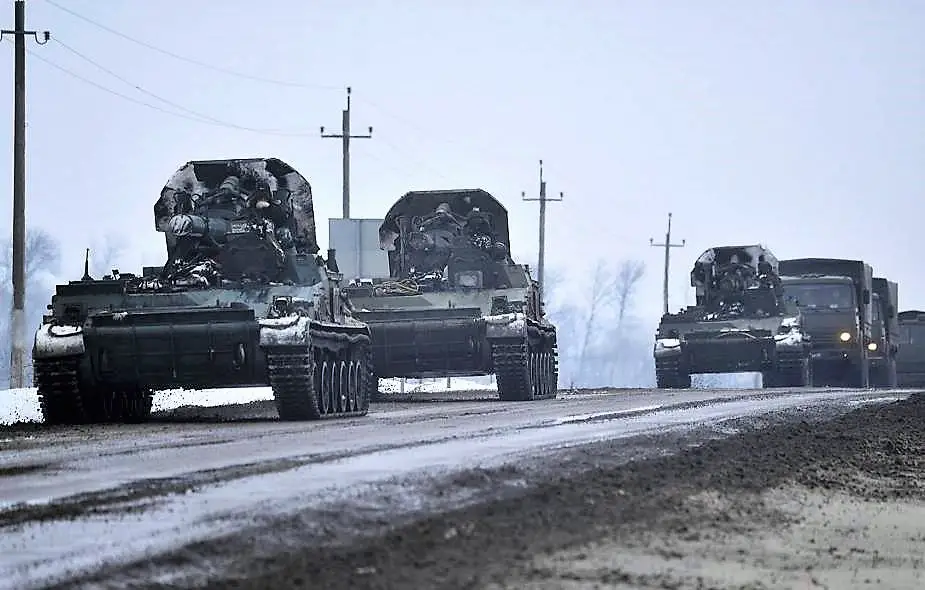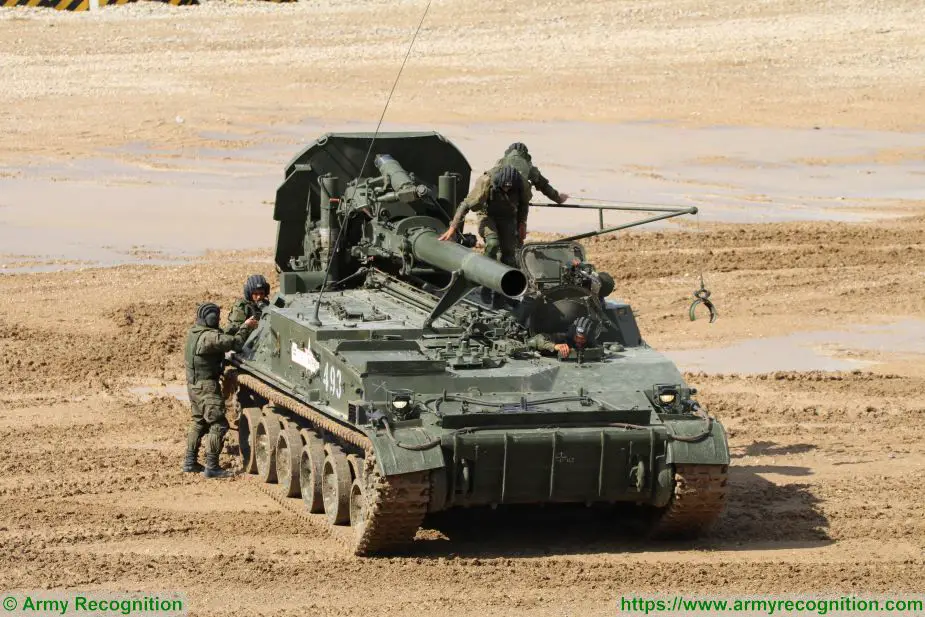- Army
- Conflicts in the world
- Israel - Iran conflict 2025
- Pakistan - India Conflict 2025
- Russia Ukraine War 2022
- Libya conflict day by day
- HAMAS - Israel War 2023
- Operation Serval in Mali French Army
- Sangaris operation Central African Republic
- Sangaris opération militaire République Centreafrique
- Ukraine - Russia conflict
- Syria conflict news
- Defence & Security Industry Technology
- Armies in the world
- Analysis Defense and Security Industry
- Conflicts in the world
- Navy
- Air
Russian army pounders Ukrainian cities with 2S4 Tyulpan 240mm self-propelled mortars
The 2S4 Tyulpan (often spelled Tulpan; Tulip, in English) is a Soviet-era 240 mm self-propelled heavy mortar. "2S4" is its GRAU designation. The Tyulpan is the largest mortar system in use today. There is nothing comparable to the Tyulpan.
Follow Army Recognition on Google News at this link

Russian 2S4 Tyulpan 240mm self-propelled mortar on the move in Belgorod, with the Z indicating they are heading to Ukraine. (Picture source: Twiter account of Rob Lee)
Following World War II, the Soviet Union developed two types of heavy infantry mortar in 160 and 240 mm calibers, both conventional albeit breech-loaded designs. Due to do their relatively large dimensions, total mass and the heavyweight of their projectiles (and the M-240 in particular), these mortars could hardly hope to function in the field.
To alleviate the obvious mobility concerns, the army mounted the heavy mortar on a self-propelled, tracked chassis with the gun installed externally on the chassis, rather than in an enclosed superstructure or turret. For firing, the gun was to be pivoted at the vehicle's rear and anchored in the ground with the use of a massive recoil-absorbing base plate. Initially, designers planned to utilize a common chassis used in the 2S1 Gvozdika self-propelled howitzer, but quickly found it was not robust enough to handle the significant recoil (approx. 400 tonne-force).
A formal agreement to initiate work on the new project was signed on July 4, 1967, but the preliminary design had been ongoing at the OKB-3 experimental design bureau since 1966 under G. Yefremov. The new vehicle was developed by a team of engineers from the SKB (design bureau) of the Perm Machine Building Plant named after V. I. Lenin, using the M-240 towed mortar as the basis.
In the self-propelled variant, the weapon's tube and breechblock remained unchanged, but the base plate was substantially modified and the mortar used a different system of gun-laying gears and drives, which allowed the tube to traverse 41° in azimuth when elevated to the maximum extent, and only 10° traverse at the lower limit of elevation. The range of elevation achieved was 50° to 80°. The mortar tube has a length of 5 m, weighs 1,100 kg with the breechblock, and the total artillery component of the 2S4 has a weight of 3,300 kg. During the design phase, the weapon system carried the designation LP-40.
An initial batch of three vehicles was completed in mid-1969 and immediately directed into a factory trials program which concluded in October. The 'Tyulpan' was accepted into service with the USSR two years later, and serial production commenced in 1974.

2S4 Tyulpan at Armya-2017 International Military Technical Forum near Moscow and Kubinka. (Picture source: Army Recognition)
The 2S4 Tyulpan was seen by the west for the first time in 1975, and so received the NATO designation M-1975, whereas its official designation is 2S4. The Tyulpan saw action during the conflicts in Afghanistan and Chechnya. In both conflicts, the "Smel'chak" ("Daredevil"), a laser-guided round consistently destroyed targets quickly, precisely, and with only a few rounds. The extreme firepower per round compensates for the Tyulpan's slow rate of fire. There were also reports that the Tyulpan may have been used by the Syrian Army during the 2012 bombardment of Homs. Although, other reports suggest that the towed 240 mm mortar M240 were used instead. The Tyulpan was used successfully in 2014 by Russian separatists (or Russian regulars) at airports in Donetsk and Luhansk. The shell arcs high and then comes down in a near-vertical fashion to burst on top of a building or other targets. Each shell is 5 feet long and the vehicle can carry 40 projectiles on board. And OSCE observers, monitoring movements of equipment in the war in Donbas with a UAV, spotted a 2S4 on territory under the control of the Donetsk People's Republic on 4 July 2015.
The 2S4 has a slow rate of fire: only one round per minute. This is due to the large size of the mortar and the weight of its ammunition: 130 kg (290 lb) for standard HE rounds and 228 kg (503 lb) for rocket-assisted HE rounds. It can also be loaded one round at a time via a small crane, which is most often used to load the magazines or to place special rounds onto the loading track.
The 2S4 has a range of 9,650 meters using standard high-explosive rounds, but a range of 20,000 meters using extended range munition. In addition to the high explosive rounds, it can also fire armor-piercing, laser-guided and cluster munitions, as well as chemical, neutron and tactical nuclear rounds. The Russians have stated that the chemical and tactical nuclear munitions are no longer in service. During the Cold War, the Tyulpan was equipped with chemical warheads and tactical nuclear weapons. There is a precision-guided projectile called the “Daredevil” that was used in Afghanistan and Chechnya, where it pulverized Grozny and took out Chechens who were hiding in mountain caves. A blast from the 28-ton Tyulpan smoothbore mortar can take out fortified buildings, bunkers, and airport runways. The Tyulpan can fire cluster munitions, which the Syrians employed against urban targets during the civil war; these bomblets float down by small parachutes.
The 2S4 crew consists of a driver and the commander, plus an additional 3 support troops are needed to operate the mortar. The additional troops are usually carried by a separate armored personnel carrier.


























